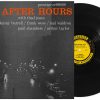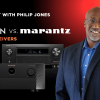Regular readers of Stereophile should be familiar with the debate over the price of the equipment reviewed by the magazine. While one side threatens to cancel their subscriptions for the apparent editorial preoccupation with unaffordable components, the other defends the magazine by making the trite (if not irrelevant) claim that auto enthusiasts don’t complain when their magazines review “a Lamborghini or Ferrari that carries a price tag of $300,000 to $500,000” (see June 2005, Letters to the Editor). It strikes me that as entertaining as the numerous letters from these two sides have been through the years, not one single letter has provided any statistical information about the price of the audio components covered by Stereophile. What I offer in this letter is some presumably useful but rudimentary statistics that hopefully will take the debate beyond the usual chest-thumping by both camps.
| Table 1: Breakdown by Equipment Type | ||
| Type | Count | % |
| Acc/Misc/Rmtreat | 24 | 10% |
| Amplification | 47 | 20% |
| Cable/Interconnect | 8 | 3% |
| Cartridge | 12 | 5% |
| Digital | 33 | 14% |
| Headphone/Amp | 5 | 2% |
| Loudspeaker | 59 | 25% |
| MultiChannel | 6 | 3% |
| PhonoPreamp | 15 | 6% |
| PowerAccessory | 3 | 1% |
| Subwoofer | 5 | 2% |
| Tonearm | 3 | 1% |
| Turntable | 15 | 6% |
| Total | 235 | 100% |
Approach
My approach is simple: re-read recent issues of the magazine, keep track of all components reviewed and related information, and put it all in a spreadsheet for subsequent analysis. Over a few Dickensian weekends (and on Christmas Day too!), sitting at my candle-lit, too-small desk covered with sheets of paper from God knows where (I elaborate for effect, but not by much), I went through 16 issues (January 2004 through April 2005), tediously scanning every page of every issue for what I would consider a review:
- “Full” reviews and follow-ups; excludes mentions of equipment from news, show reports, and sentimental reminiscences.
- Reviews of related items (such as musical instruments and wine); a review is a review–work is work and credit given.
- Although some equipment are reviewed more than once (as in a follow-up) or by different reviewers, each review is included if it is indeed a review and not a reference or mention.
To make it easier for myself, I lump various types of equipment together. For example, the amplification category includes pre-amps, amplifiers, and integrated amps; digital includes digital sources, transports, DACs. The accessory-room treatment- miscellaneous category includes items such as platforms, air purifiers, cleaners, record racks, and of course, the Musical Fidelity chronograph watch reviewed by Sam Telling in his June 2004 column. Only the lowest cited retail price is used, regardless of options and subsequent price increases.
Some Pricing Statistics
There are a total of 235 equipment reviews in the 16 sample issues of Stereophile, an average of 14.7 reviews per issue. Given the $1.08 cost per issue (based on the discounted annual subscription rate of $12.97 per year), the average cost of a component review is $0.07 — most remarkable value!
Loudspeakers make up 25% (59) of the reviews, with amplification 20% (47). Table 1 details all the equipment types for the 235 reviews. Total cost of all equipment reviewed in all 235 reviews is $1,801,724 with an average component price of $7,667. (Without the $350,000 Wavac SH-833 amplifier reviewed in the July 2004 issue, which I felt distorted my survey, the average drops to $6,204.) However, given the wide variety of equipment and the range in prices between the different types, these numbers are hardly useful.
| Table 2: Price Breakdown by Equipment Type (Four Types Only) | |||
| Equip Type | Low Price | Average Price | High Price |
| Loudspeaker | $ 198 | $ 9,448 | $ 64,995 |
| Amplification | $ 529 | $ 15,299 / $ 8,023 | $ 350,000 / $ 29,290 |
| Digital | $ 50 | $ 4,634 | $ 24,990 |
| Turntable | $ 279 | $ 3,144 | $ 7,000 |
Table 2 shows the lowest, average, and highest prices for four of the 13 equipment categories (consisting of 65% of the reviews). Average price is chosen over of median price because it seems to me a more useful number given the wide range between lowest and highest price for any given type of audio equipment. The Amplification category lists values including and not including the $350,000 Wavac amp.
The oft-cited $10,000 tag for an “audiophile-quality” system does appear to be shy (even with the nominal customer discount that dealers offer) of the $20,000 (based on Average Price from Table 2) it would take to purchase a system made up of the components from these 16 sample issues. The average price does seem high. It also seems to substantiate the criticism that Stereophile reviews expensive equipment — but that would be wrong. Using a price point of $2,000 (my conservative estimate of the price of a component for a $10,000 system), Table 3 shows that about four of every 10 reviews are of equipment that are priced less than or equal to this amount, which does undermine the criticism to some extent. My only caveat here is the assumption that $2,000 is an “affordable” price for a component. Perhaps a better method for determining the threshold is to base the price point on some combination of income and price of luxury goods here in the U.S.
| Table 3: Price Divide by Equipment Type (Four Types Only) | |||
| Count<=$2,000 | Count>$2,000 | Total | |
| Loudspeaker | 27 (46%) | 32 (54%) | 59 |
| Amp | 12 (26%) | 34 (74%) | 47 |
| Digital | 14 (42%) | 19 (58%) | 33 |
| Turntable | 6 (40%) | 9 (60%) | 15 |
| Total | 59 (39%) | 94 (61%) | 154 |
One observation no one can deny is the wide price range regardless of equipment type. The standard deviation for the prices of the 59 loudspeakers reviewed is $14,100. For the 47 amplification components, the standard deviation is a whopping $50,440 with the Wavac or a more realistic $7,559 without it. The wide dispersion in pricing says more about the hi-fi industry than about Stereophile, and likely contributes to the flagging state of the business. It is difficult for a buyer to justify the presumably large difference in costs for subjectively better components given the diminishing return of the higher priced equipment. I will leave it to others more qualified than I to elaborate on how pricing of low, mid and high-end equipment have affected the industry. For now, my point is that the criticism directed at Stereophile about the affordability of the reviewed components has less to do with prices per se than with pricing as a whole and the lack of a way to determine comparative value between the components.
Other Questions and Criticisms Addressed
Since I already have the data, I did some additional analysis to address other questions and criticisms that have been raised by readers. One criticism related to pricing is that the recommended component class hierarchy seems to be based on pricing, with class A going to the highest-priced equipment. To my surprise, there is only a 56.9% correlation between loudspeakers and the recommended class, and for amplification only a 49.8% correlation (without the Wavac, which would have decreased the correlation to 16.9%).
| Table 4: Count of Reviews by Contributors | ||
| Reviewer | Review Count | % |
| Atkinson | 18 | 8% |
| Bolin | 15 | 6% |
| Damkroger | 8 | 3% |
| Dudley | 37 | 16% |
| Fremer | 59 | 25% |
| Greenhill | 8 | 3% |
| Marks | 9 | 4% |
| Messenger | 1 | 0% |
| Phillips | 3 | 1% |
| Reina | 13 | 6% |
| Rubinson | 21 | 9% |
| Tellig | 43 | 18% |
| Total | 235 | 100% |
Another common criticism is that the magazine reviews too many Musical Fidelity products. The manufacturer does indeed have the highest number of reviews: 13, which, however, makes up only 5.5% of the 235 reviews, with Sam Tellig contributing 9, and Mike Fremer the other 4. Triangle has 6 reviews (2.6%), McIntosh 5 (2.1%), and a number of other manufacturers, such as DNM, Lamm, Linn, Rega, and Sudgen with 4 reviews (1.7%). The 16 sample issues reviewed products from 157 manufacturers! The criticism of too many Musical Fidelity reviews may seem unwarranted in this light. A related criticism that I do not address is the claim that advertising determines Stereophile review policy. It would have been a simple matter of counting the advertisements from the sample issues, but this only occurred to me after I have collected the data. I am happy for any reader to take up this investigation.
The Hardest Working Man at Stereophile
So, who is the hardest working man at the magazine in from January 2004 through April 2005? Table 4 declares Mike Fremer the workaholic with 59 (25%) reviews. (The double duty that John Atkinson performs with his measurements is not included in the data.) Sam Tellig with 43 reviews (18%) and Art Dudley’s 37 (16%) are not far behind.
The work that went into this letter was not as tedious as it may appear. I enjoyed the bits about European trips, arguments with the New York Times, wine-tasting, and politics in America as much as learning about the audio components themselves. It truly was a pleasure re-reading these 16 issues, and this finally is a testament to the fine writing of Stereophile‘s staff.
G. Matthew Wong (gmwong2002 [at] yahoo.com)





























